#guitar effects
Text

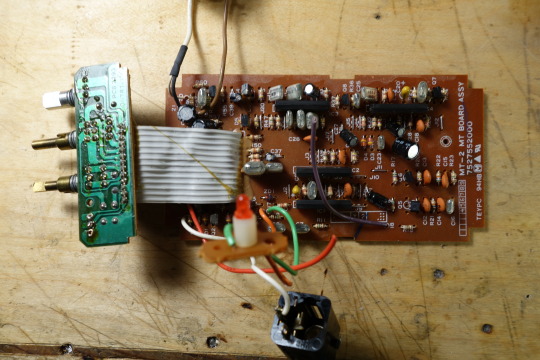
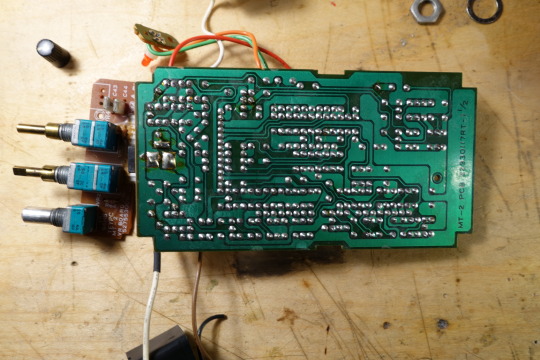
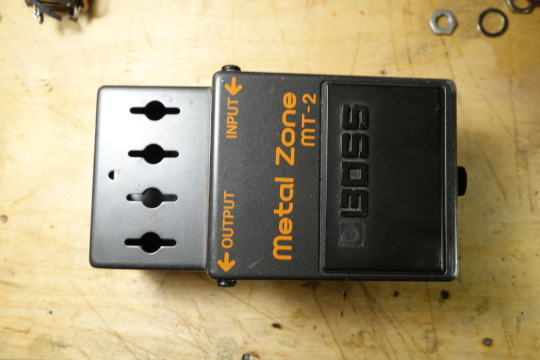


Boss Metal Zone MT-2, tear-down photos, with schematic.
possibly the worlds most common pedal, the metal zone has had a pretty bad reputation, but I actually like it, in the right circumstance.
the metal zone has a very strong pre-eq that mimics the pre-amp tone of a Marshall or fender. I assume this was intended to give a cheep solid state practice amp the tone of those classic amps.

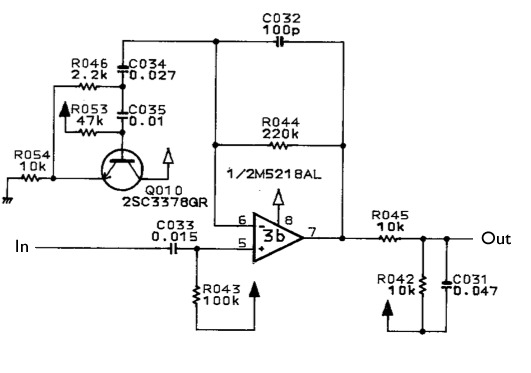
(chart of the frequency response, and schematic of the first stage of the MT-2)
it was common for early solid state amps to be more linear then a fender/Marshall, which have a very pronounced high end bump. (this is a result of the non-linarity of the tone control.) the high end bump can be flattering to a lead guitarist, and necessary to get a screaming hi-gain sound.
if the metal zone is placed before an amp that already has a pronounced hi end, it is going to sound very bad. I prefer to use it directly into a DI box, but it can also be run straight into a power amp with good results.
I'm in the process of modifying this particular pedal, and converting it to a rack mount distortion, to better fit my recording process.
#electric guitar#guitar pedals#guitar#guitar effects#effect pedals#distortion#diy electronics#electronics#technology#tech#diy music
45 notes
·
View notes
Text

I got the prettiest and most badass sounding effects pedal from @pheadhones today!!
It's a shame I don't have a pink guitar to go with it but I do have a kickass pink tee to wear when I rock out 😋
#electric guitar#guitar effects#effects pedals#Eff yeah#Overdive#Distortion#Fuzz#Doom#Chug#Pink#lgbtq
7 notes
·
View notes
Text
We've made a new pedal!
youtube
Here's the first teaser for our new Pitch Magpie pedal, a pitch shifter that aims to capture the best of the weirdest pitch shifters from the 90s...
Background
For the past couple years, we've been trying to make a delay-based pitch shifter that sounds good. It hasn't been easy. There's a reason that most pitch shifters have switched to FFT-based algorithms: latency. There's a reason the monophonic Whammy is more popular than the delay-based PS3. Usually, to make a delay-based shifter sound decent, you need to use long delay times, which creates some serious latency. That's fine for organ type effects, but it can be pretty limiting. In contrast, reduce that latency too much and you've got a metallic ring mod, especially on the lowest string of the guitar. But with some tweaking and some crossfade tricks, we think we've found the perfect middle ground. And although there's still a tiny bit of lag, you probably won't care once you add the filters or vibrato haha!
Why filters and vibrato? Well, when I have used those old delay-based shifters, I always thought they sounded best when combined with other pedals — especially for creating special effects! So I though: what if those effects were combined with the shifter? Not just slapped on after the pitch shifting circuit, but actually integrated into the circuit, so that turning up the feedback ("overtone") effects the filter or the vibrato too. The results were even better than we hoped! Sure, it's nice that the pedal can double as a random chorus or a modulated highpass with the pitch shifter section disabled. But turn on the pitch shifter, and the resonance of the filter and the overtones of the pitch shifter start to interact as you turn up the feedback. And if you set the shifter near minimum with high feedback, you get all sorts of comb filter effects. With just a few knobs, the possibilities are really surprising!
Features
It's hard to express how many ideas and variables we packed into the Pitch Magpie. But the three modes are a start. Each is based around the same core pitch shifter, but each offers a unique effect:
Glis Mode (“glissando”) generates an auto-slide, adding a pitch slide when the input signal goes over a certain threshold (think: Hounds). The slide time is controlled by the param knob, which also selects between two slide shapes (basic or U-shaped).
Res Mode applies a resonant filter, selectable between lowpass and highpass with random modulation options. There’s always a bit of resonance, but turning up the overtone knob adds even more, with feedback and oscillation at extreme high settings.
Vib Mode applies vibrato to the the wet signal. Setting the pitch knob to center bypasses the pitch shifter, allowing you to create chorus effects by blending the dry signal. It can even work as a random vibrato (tape warble) with the param knob at max.
With all of our pedals, we try to keep the controls as concise and performance-friendly as possible. We could easily make this kind of pedal with a ton of knobs. But we wanted to find sweet spots and make it quick to move between them. Though we also made sure to give enough adjustment for things to get weird!
The Pitch Magpie's Param knob on takes this idea to the extreme. The knob is most dramatic on the Res mode: left of center, it controls the frequency of a lowpass filter; right of center, it controls the frequency of a highpass filter. But set the knob to minimum and it randomly modulates the frequency of the lowpass. As maximum, it does the same for the highpass.
The Pitch knob is quantized to the semitone, offering 31 distinct settings. For continuous pitch control (for whammy-style effects or microtonal adjustments), the expression input can be used.
As on the Oxford Drive and EQ-201, the footswitch is configured for “flexible” bypass. Tap the switch briefly to turn the pedal on and off. But hold down the footswitch, and it was act as a momentary switch, keeping the pedal active until you release it. This seems particularly useful with this pedal, especially on more chaotic settings. You can also alternate the default bypass state of the pedal by holding down the footswitch while plugging in the power jack.
10 notes
·
View notes
Text
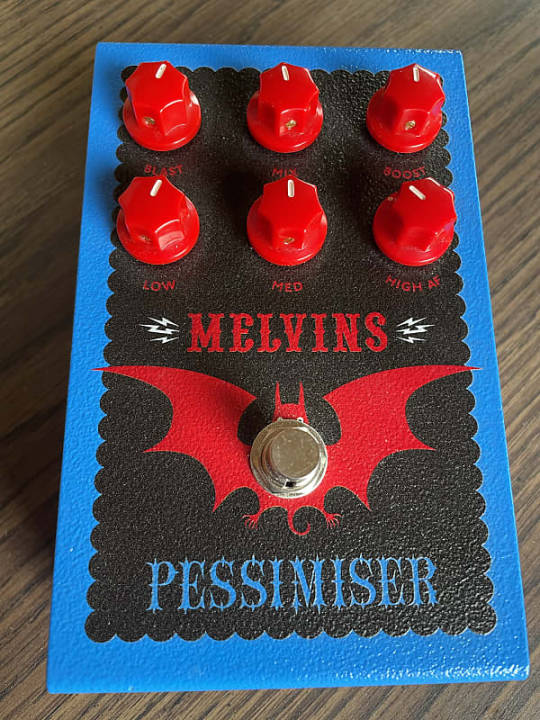

SETTINGS INCLUDE: "BLAST," "MIX," "BOOST," "COW," "MED," AND THE FUNNY AF, "HIGH AF."
PIC(S) INFO: Spotlight on a first edition [blue] Hilbish Design Pessimiser Distortion guitar pedal, a King Buzzo/MELVINS collaboration, c. 2017. Only 150 made worldwide.
Sources: https://reverb.com/item/68904671-hilbish-design-pessimiser-king-buzzo-melvins-first-edition-blue-86-of-150-2018-blue (Reverb 2x).
#MELVINS Pessimiser Distortion Pedal#MELVINS#Pessimiser Distortion Pedal#THE MELVINS#Fuzz Pedal#Guitar FX#Guitar Effects#Sludge#Sludge Metal#Sludge/DOOM Metal#Pessimiser Pedal#The Pessimiser#Guitar Tech#Pedals#Guitar Pedals#DOOM Metal#DOOM#Distortion Pedal#Guitar Distortion Pedal#Sludge DOOM#MELVINS Pessimiser#Distortion Pedals#MELVINS band#Guitar Pedal#Sludge/DOOM#Pessimiser#Hilbish Design
4 notes
·
View notes
Text

Electro-Harmonix - "ANALOGizer"
3 notes
·
View notes
Text
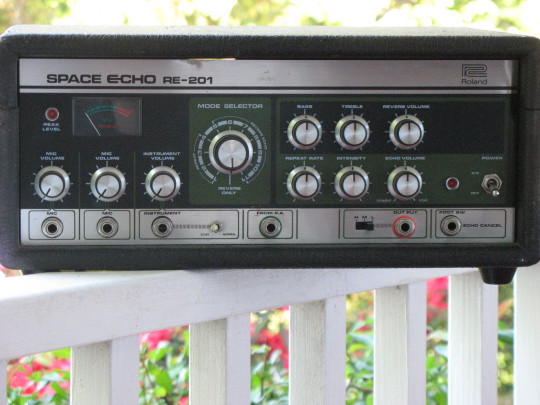
BNoss just released the DD-8 delay pedal and I had some thoughts on delays in general. Posted on my substack.
#guitar#guitar store#guitar shop life#guitar effects#guitar fx#guitarpedals#effects pedals#guitar player#guitar pedals#effects history#delay pedals
10 notes
·
View notes
Text
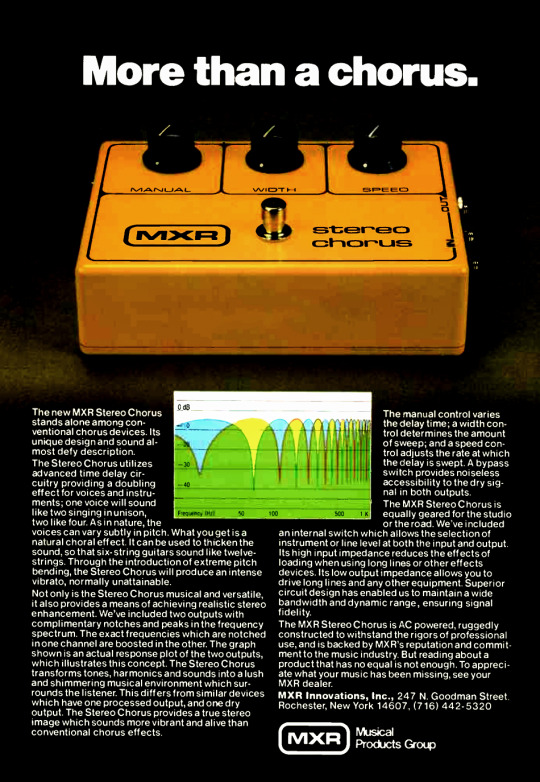
MXR Stereo Chorus pedal - 1979.
#vintage advertising#vintage music#classic rock#rock#music industry#recording artists#rock music#rock band#rock and roll#guitars#guitar effects#lead guitar#guitarists#mxr#stereo chorus devices#mxr stereo chorus#vintage guitar equipment#vintage musical equipment#guitar pedals
3 notes
·
View notes
Text
youtube
ATTENTION Noisemakers and Sonic Experimenters: Death By Audio has done it again, this time around with the new Disturbance Lockable LFO Modulator Filter Flanger Phaser!! Holy Modulation, Batman!! Full Demo on tha YouTubez now...
#pedaloftheday#effectspedals#guitar#pedals#effects#pedalsandeffects#guitareffects#pedalboard#guitarist#guitarpedals#pedal of the day#pedals and effects#guitar pedals#guitar effects#death by audio#disturbance#modulator#modulation#filter#filter pedal#flanger#flanger pedal#phaser#phaser pedal#Youtube
7 notes
·
View notes
Text
I came across it Today and it's old sentiment to me.

A years ago I've started to build this GREEN RINGER effect pedal which is still in progress. That time back I've been moving to the new flat and haven't got enough time to go through thousands of parts to find the right ones to get it done. Then it fell into dust. I was using old parts from broken Fender amps I collected in the past years and this one effect meant to be greener than green just by its look. I was really excited how it's gonna sounds like depending on these parts taken off the old circuits and none of these would be normally used for this particular type of wiring. I should keep these parts to fix some other amps but I found this idea to be quite interesting.
Ringmode effects such as Gonkulator by DOD likewise this Green Ringer are my favourite distortions, right after Fuzz effects. Could be something sentimental about oldschool era of those wierd dial tones.
https://youtu.be/HR2I6xIn1uQ?si=5ACupMaK-6xqfAjF
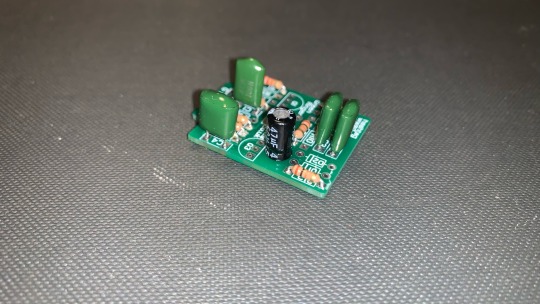

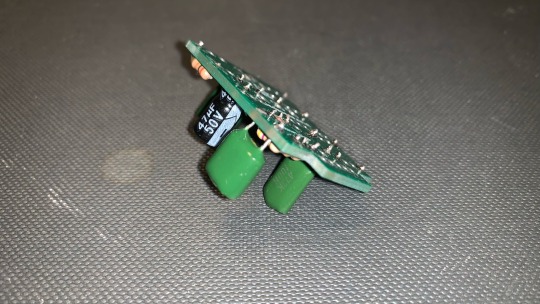



#green ringer#greenringer#ging mode#effect pedal#butique pedal#diy effects#diyeffects#effectpedal#fx pedal#guitar effect#guitar effects#distortion#fuzz
2 notes
·
View notes
Text
DIY Dumble-like sounding MOSFET Overdrive

The Hermida Zendrive guitar pedal we will study, assemble and listen to today is a true masterpiece. Many say its sound is close to the Holy Grail of guitar amplification - Dumble Overdrive Special.
Other people are more pessimistic in their judgments. Still, the precise response to the picking dynamics, the Voicing tuning options, and the sheer beauty of this overdrive's sound are simply impossible not to love.
But before we study the Lovepedal Zendrive or its copy of the Landtone Phoenix song, or the Aion effects Azimuth dynamic overdrive, we'll study the evolution of the MOSFET overdrives that finally resulted in the development of this gem.
Fulltone OCD

Mike Fuller was one of the first to start using MOSFETs instead of diodes to limit the amplified guitar signal in 2004.
His Obsessive-Compulsive Drive overdrive-distortion pedal is built on a standard circuit with one dual op amp. The first operational amplifier, X1, amplifies the amplitude of the guitar signal by a factor from 8 to 463 times, depending on the position of the drive control X3. This is a 1-megohm potentiometer.

Further, through resistor R9, the signal is fed to the limiter, which comprises 2N7000 MOSFETs M1 and M2 connected in parallel. A germanium diode D1 - 1N34A is additionally included in series with M2, which makes the limiter asymmetrical and, therefore, makes more interesting sound.
A limiter in overdrives is usually included in the negative feedback circuit of an operational amplifier (i.e., in parallel with C6). Such a limiter is called a soft limiter.
And here, a hard limitation is applied: clipping sections are included between the preamplifier output of the gain section and the virtual ground - half of the supply voltage Vref, formed by resistors R4 and R7.
Virtual ground is used in the unipolar powering of operational amplifiers to amplify analog signals, such as audio signals. The guitar signal does not change from zero to plus but from minus to plus, passing through zero.
To prevent the signal from being limited to the circuit's ground, it is shifted in the plus direction by half the supply voltage.
Such hard limiting is typical for distortion pedals. But by using MOSFETs instead of diodes or LEDs, the top of the signal is not cut hard but softly rounded. Therefore, OCD can work as both distortion and overdrive.
Due to the smoothed peaks of the limited signal, the sound is highly dependent on the sound's attack dynamics. For rock and especially blues, this is very valuable. With modern metal pickups that compress the dynamic range of the signal, it can help make solos sounding more sweet.
The second operational amplifier X3 amplifies the limited signal by a factor of 3.8, correcting its timbre. Capacitors C6 and C9 prevent the self-excitation of operational amplifiers at high frequencies.
Next is a simple passive tone knob, which implies a treble leak circuit. Potentiometer X4 10 kilohms and capacitor C11 47 nanofarads are connected in the same way as on the pickguard of any electric guitar.
The Switch1 switch changes the circuit's output impedance as if the high-impedance and low-impedance pickups were switched. When it's open, you get a transparent overdrive like the Klon Centaur, and when it's closed, you can get a more aggressive sound like the Marshall Plexi.
Hermida Audio Zendrive

The Zendrive pedal's authors, Hermida audio technology (now produced by LOVEPEDAL LLC), have undoubtedly studied the Fulltone OCD thoroughly. Let's find the differences between the two circuits.
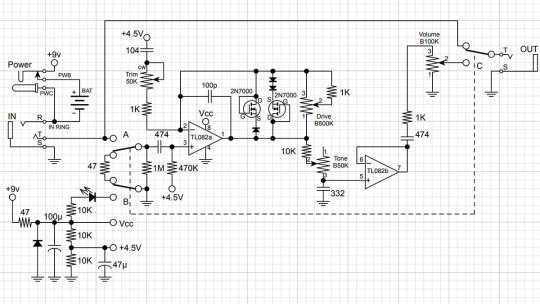
First, the limiter is included in the operational amplifier feedback, that is, between the output and the inverting input, not between the output and virtual ground. That is, here we have a soft limiter.
Secondly, one diode is added in series with each MOSFET. Clipping remains asymmetric: we have one diode in the left arm of the limiter and two diodes in the right arm.
Third, the second operational amplifier is used as a voltage repeater, aka buffer: the output is directly connected to the inverting input.
Fourth, the tone control is implemented a little differently: two OCD`s switchable resistors are replaced by a potentiometer.
And finally, the most critical, fifth difference. A potentiometer is included in the tone correction circuit between the inverting input of the first operational amplifier and the artificial midpoint.
This fourth knob, Voicing, or Character, allows you to smoothly adjust the lower frequencies in the overdrive structure over a wide range, similar to the Resonance control on many tube guitar amps.
The potentiometer is signed as a trimmer in the diagram because some pedal makers don't want to install a fourth knob on the pedal`s body. This is what Landtone did when developing the Phoenix Song Overdrive DIY kit.
The developer suggests installing the trimmer on the PCB, and to access it, you need to disassemble the pedal by unscrewing the footswitch nut and taking out the PCB.
But I will not be lazy to drill an extra hole in the pedal body and install a potentiometer with a knob, connected to PCB by wires instead of the trimmer. Because I consider this regulator simply invaluable and irreplaceable.

Before we get to assembly and testing, let's look at another pedal with a similar adjustment. However, it is based not on the Fulltone OCD but on the Ibanez Tube Screamer.
The Precision Drive

This is a signature pedal by Misha Mansour of Periphery, manufactured by Horizon Devices. Compared to the original Overdrive Pro TS808, the circuit adds a noise suppressor, which we will not consider, and an exciting ATTACK switch.
The Precision Drive scheme was studied and partially replicated by PedalPCB and PCB Guitar Mania. They are manufacturers of DIY kits for guitarists. Their products are called Dwarven Hammer and Collision Drive, respectively. A noise gate is not provided there, but the attack switch is implemented. This is the main difference between Precision Drive and many other overdrive pedals.

In the Fulltone OCD schematic, we saw a resistor switch at the tone shaping circuit in the output section. The Zendrive has a variable resistor in the preamp's RC circuit which is controlling the overdrive structure.
Precision Drive has a constant resistor in the same place, between the inverting input of the overdrive section operational amplifier and the virtual ground, but the capacitors are switched.
This is the same thing: we change the time constant of the RC circuit, which adjusts the audio signal's frequency spectrum. At the same time as the time constant, the complex impedance changes, thus the gain.
A resistor is a resistance to both DC and AC current. At the same time, a capacitor is only resistant to AC current because DC current does not flow through a capacitor. Since DC current does not flow through our RC circuit, there is no difference between adjusting the resistance and switching the capacitance.
But the active/reactive ratio affects the circuit's Quality factor, i.e., its resonance. It's no coincidence that the knob on guitar amplifiers, which adjusts the same frequencies as our potentiometer or switch, is often called RESONANCE. And it is used to adjust to the resonance of the electromechanical system - the loudspeakers in the cabinet, along with the masses of air in and around it.
The reactive impedance accumulates energy and gives it away, except for losses due to dielectric recharging and magnetizing the magnetic core in inductors. This is why coreless inductors are often used in high-end equipment, so-called air inductors. They weigh a lot, take up a lot of space, and are expensive because copper is more expensive than steel. But these are the laws of physics on which technology is based.

Unlike reactive impedance, active resistance converts electrical energy into heat, thus reducing the Q-factor. In some cases, it is necessary and useful. In others, it is harmful. Or it simply creates a unique sound character.
That's why switching capacitors and turning the potentiometer knob in the feedback circuit of an audio frequency amplifier is almost the same thing, but not quite. And it's great that there are such different variants of guitar overdrive pedals!
Landtone Phoenix Song Overdrive
Now you can hear how my Zendrive from the Landtone OD-1 kit sounds, with a Seymour-Duncan SH4 humbucker on a Gibson MM Explorer guitar, into an Orange MT20 with a Torpedo Captor X. And see how I assembled the pedal and also a kitten walking around the table and prancing around.
youtube
I liked the pedal, especially its fourth magic Voicing knob, which does things to the sound that other tone controls can't. I also liked the bird on the body. Because I love birds. And in the music world, the decoration of instruments and hardware plays no small role because it inspires creativity. And the fact that the pedal is assembled by my hands also warms my soul and creates inspiration.
3 notes
·
View notes
Text


This is the PCB of a little octave pedal I designed based on a green ringer.
Those of you who familiar with that pedal will notice that my version has 4 switches, and then green ringer has only bypass.
In my design the switches are boost (3 positions), input and output tone (hi boost and lo cut, 3 positions each), and a germanium/silicon switch. (the bypass is optional, and mounted off board)
there are 54 total control positions, but because the switches are very independent it is quick to find the one that is most suitable.
the tone control is a unique design the uses variable resonance to get a aggressive high end boost without the hiss that is typically associated.
this has about 3 times as much circuitry as the historical green ringer, but I was able to save space by integrating the input and output buffers into the tone controls, so the design is actually very efficient for the number of features it offers.
I like this little thing, but its been too weird for other people I showed it too, so I'm looking at integrating it as part of a more conventional looking octave fuzz.
#electric guitar#diy electronics#pcb#circuit board#fuzz pedal#guitar pedals#guitar effects#music#guitar
3 notes
·
View notes
Text
Guitar Overdrive Pedal Shootout: ProCo Rat 2 Review.
Part 5 of my Guitar Overdrive Pedal Shootout series. Review of the ProCo Rat 2.
Meeting a Legend.
I won’t bore you with the background of this shootout, for that please refer to the other parts in the series on this site.
I’d now been through the clone phase, and so far in my quest I’ve established my requirements…
Organic overdrive/distortion.
Transparent and flexible enough to cope with a…

View On WordPress
#Distortion pedal#Electric Guitar#Guitar#Guitar Effects#Guitar pedals#Music#overdrive pedal#ProCo Rat#ProCo Rat 2#Review
2 notes
·
View notes
Text
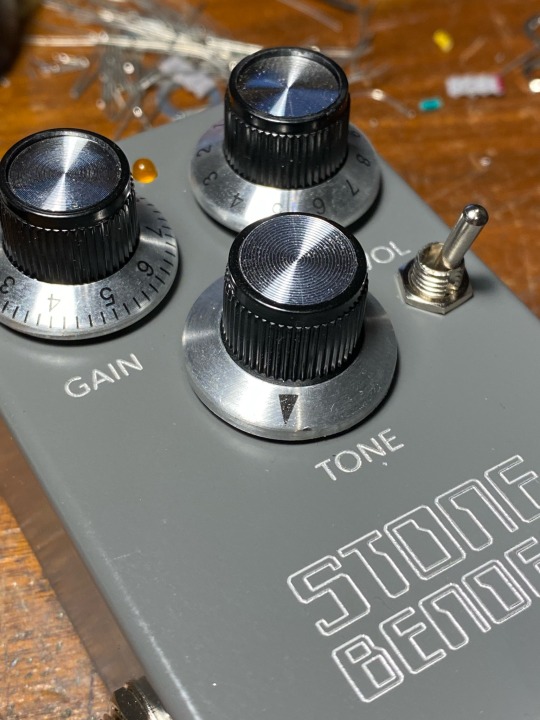
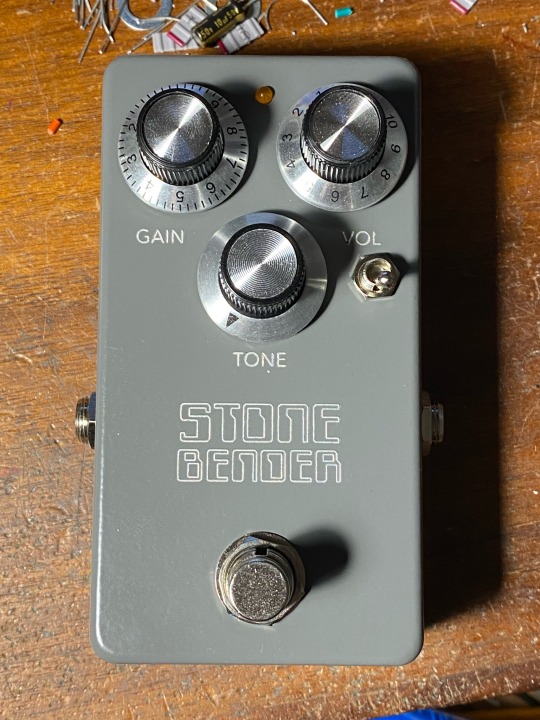


Silicon Tonebender. These BC109 sound great.
http://www.super-freq.com/stone-bender-2/
#stompbox#guitar effects#diy#effects pedal#stomp box#guitar#fuzz#distortion#guitar pedals#super freq#tonebender#pcbway
19 notes
·
View notes
Text
Yamaha CD-01 80s Compresser

In the early 80s, the 01 series were Yamaha's very first series of pedals. They were built like tanks, this one feels like it'll easily last another 40 years of gigs. Really rugged knobs and switch, solid steel housing, built in Japan.
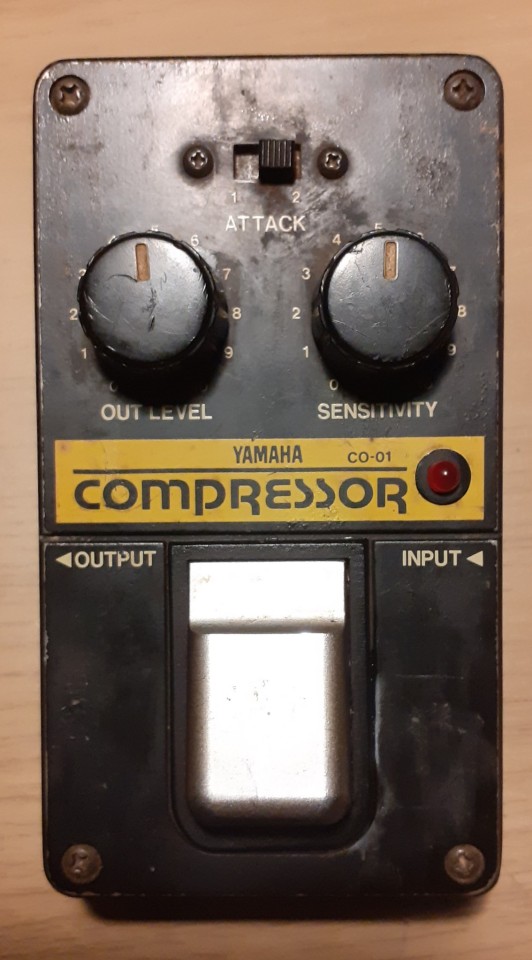
The design is sublime, wonderfully utilitarian and simple. Although it dosen't come across great in the photo, the pedal is beautifully reliced and aged.
Compressing effect is nice, but you get a real loud hum when used with distortion. Not enough to hear while playing but when the guitars off its pretty noticeable. There was a noise gate pedal in the 01 series which was made with exactly this in mind, but it is real rare. Not a huge problem but just something to know.


Only gripe is that its battery only, no dc input. It does have a spot at the back where ones that came in a prebuilt pedal board had a socket for power, so it would be very easy to mod it to have a power input.

<- see the recessed part of the back, which is removable when the pedal is taken apart
All around, great pedal, and for paying 80 bucks for it, can't go wrong! If you can find for a good price, (anything under 100 is about what I'd say is a good price at the moment) are okay with a somewhat basic, yet increadibly resilient and hard wearing compressor, and are either willing to run it off of batteries, or able to do the simple mod, it's well worth your time!
#yes im flexing the weezer poster in the back#i know its about the pedal but can we appreciate how good my hands look in this photo#guitar#guitar pedals#yamaha#guitar effects#compressor pedal#yamaha co-01
5 notes
·
View notes
Video
youtube
OD-808 clone demo
My art of the Styx: Master Of Shadows printed on a handmade guitar pedal by NorthZyklon.
#OD-808#guitar pedal#guitar pedals#maxon od808#maxon od808 overdrive#Overdrive#гитарная педаль#овердрайв#guitar effects#true bypass#tube screamer#Ibanez Tube Screamer#overdrive pedal#stompbox#styx shards of darkness#styx master of shadows#Styx#styx: master of shadows#Styx: Shards of Darkness#goblins#goblin#goblin character
5 notes
·
View notes
Text
Use code “BLACKFRIDAY” to get a deal on just about everything we have. Good through Monday.

I started More Gain Music to be family and life first for myself and anyone working with us. With that in mind, we’re open normal hours today and throughout the season.
We’ll have @rombopicks giveaways through the season, and announce the first winner later on, because we’re casual like that.
#blackfriday #guitarpicks #giveaway #fuzzpedal #guitarpedals #guitarfx #guitareffects #guitarshoplife #guitarshop #smallbusiness #smallbusinessowner #smallbusinesssaturday


#guitar#electric guitar#guitar store#guitar player#guitar pedals#guitar shop life#guitar effects#guitar fx#guitarpedals#effects pedals#guitar picks#guitar builder#guitar parts#guitar pickups#new gear#handmade#black friday#small business
15 notes
·
View notes